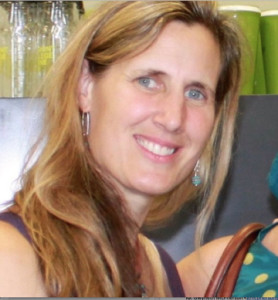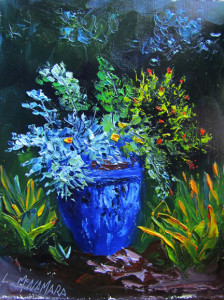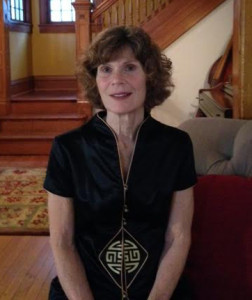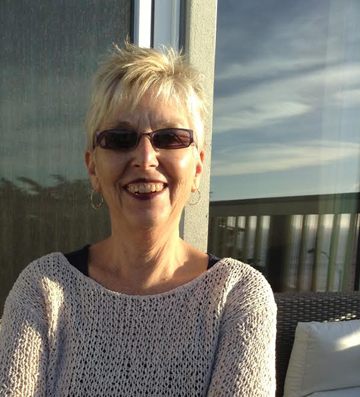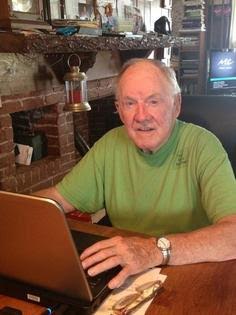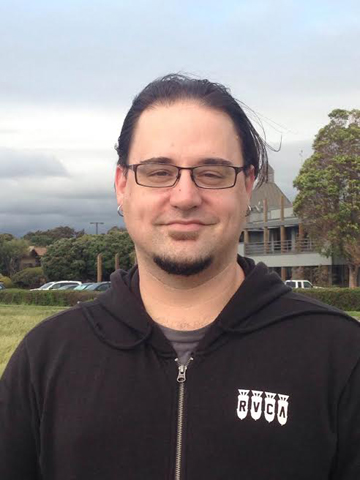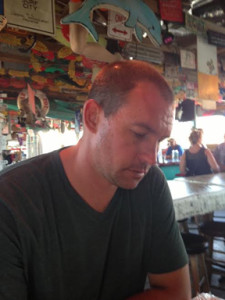
Mary Akers: Hi, Scott. Thank you for agreeing to talk to me today. I really loved your SOS piece (Argument with Myself on How to Write a Competent Essay). I know that the argument is a literary device, but it kind of begs the question: do you argue with yourself a lot when you write?
Scott Loring Sanders: I argue with myself about everything, writing or otherwise. And it’s funny you ask because I’m in the middle of an essay right now where I’m trying to explore exactly who this other self is. I see him (or me—it gets a bit confusing) as the one who keeps me grounded, my voice of reason. “He” is very logical and often talks me down off the ledge, if you will. But in this particular essay I just mentioned, I’m exploring how different that voice might have become if a few turns of fate had been slightly altered. If a few close calls had gone differently, that voice might not be nearly as stable and helpful as I currently find it.
And by the way, I got this arguing with myself honestly. My mother has talked out loud to herself for as far back as I can remember. My sister and I get a chuckle out of it sometimes, but really, we’ve always accepted it as perfectly normal. There were times, for example, when my mother would be in the kitchen cooking dinner and I’d be in the living room, and I’d hear her having full-fledged conversations. But there was nobody else there. Not a soul. I’m assuming this probably sounds odd to most people, but to me it was no big deal. My mom laughs good-naturedly about it if my sister and I try to poke a little fun at her. It’s just part of who she is. I think it’s simply her way of working through problems and issues, the same as all of us do, she just happens to do it aloud.
She has always walked for exercise, and back in the day I’m pretty sure the neighbors thought she was bat-shit—walking along, carrying on a conversation with herself, her hands flying in front of her face as if swatting gnats. Today, people passing by probably just think she’s got Bluetooth. I find it endearing, actually, partially because it doesn’t bother her in the least. She’s not embarrassed or self-conscious about it, it’s just who she is.
I occasionally do it too, talking to myself I mean. Usually when I’m frustrated with some sort of manual labor. Changing spark plugs, for example. I might bust my knuckles and say, “Come on, Scott. Don’t be such an idiot.” Yes, always in third person. Also, everything that I write, I read out loud, which is rule number one for me. And if I come across a problematic paragraph or sentence, often I’ll “talk it out” and/or make suggestions to myself.
So that’s a long, roundabout way to say, yes, I argue with myself all the time, and certainly when it comes to writing.
MA: I love that answer. A Bluetooth connected to the other self. I’m digging that idea. I argue with myself, too, except it’s my last name that comes up. As in, “Get a grip, Akers.” My Bluetooth other has a very sarcastic, paramilitary tone. I’ll know I’m really off the deep end when it says, “Drop and give me twenty.”
I am fascinated by internal struggle. I feel like we must all face some form of it, yes? (It’s not only me, right?) The thing that seems especially brilliant in your piece is that the internal struggle is–on the surface–about writing, but it is also about addiction and moderation imposed by the self, and anger at the intemperate self, the immoderate self, even the creative self. Would you like to comment on that?
SLS: I suppose my first answer covers this to some degree, but I could certainly expound on the writing aspect. And “brilliant” might be a bit strong, but thanks all the same! I’ll take everything I can get.
Generally speaking, I’m a pretty confident person. But when it comes to writing, I never am. I question everything. Is it good enough? Why would anyone want to read this? I have no idea where I’m going. What the hell am I trying to say? It’s pretty normal, I guess. I’ve heard plenty of highly successful writers say the same thing.
No matter what I write, fiction or nonfiction, these doubts constantly pop up. It’s always an internal struggle. When I get a piece accepted for publication, often I’ll think, “They must’ve really needed material for the issue” OR “Wow, I fooled them, didn’t I?” Every once in a while, one of those pieces gets nominated for an award, and occasionally even wins, which you might assume would provide some pretty solid validation. But I’ll still tell myself, “The field must have been weak this year” OR “I got lucky and happened to hit on a theme the judge was interested in.” I swear to God, I’m like an awful, domineering step-parent to my own self, where no matter what I do, it’s never good enough. But you know what, I don’t think that’s a bad thing anymore. Over time, I’ve learned that beating myself up in that way is actually healthy when it comes to writing. It helps push me, it helps make me better, it helps squeeze every little bit I can out of a piece. Early in my career, as I guess many young writers do, I’d knock something out, say, “Voila. You’re a genius” and then send it out, only to receive 100% rejection. After getting pummeled repeatedly, I learned humility and patience. And tenacity.
I struggle with every aspect of writing—composing, editing, rewriting, etc. But over time I figured out that that struggle is part of the journey and process. I now accept it and trust myself that eventually I’ll produce something (hopefully) worthwhile. Those internal struggles and arguments have only made me a better writer. A more thorough writer. But it never comes easy, that’s for sure. Not for me anyway.
MA: Agreed. I work hard to remind myself (and others) of the need for persistence in writing. In fact, it’s kind of a thing with me. I run a writing office in Zoetrope Virtual Studios and the title of the office is R.I.P which stands for Rejection Isn’t Personal. The tagline that goes with it is “Writing is a game of Attrition. Don’t attrish.” I stole this from the director of my MFA program, Fred Leebron. (Let that sentence serve as my attribution credit.)
I know you also had a short story published at Prime Number with a character who was addicted to crystal meth. Is addiction a theme that recurs a lot in your writing? (It does in mine.) If so, why do you think that is?
SLS: Substance abuse does show up pretty often in my work. I don’t know that I’d call it a theme, necessarily, but it is certainly a means for developing a character, if nothing else. Addiction creates obstacles for a character. Which in turn creates tension. Which in turn raises the stakes. Which in turn makes things interesting. And besides, they say “Write what you know” don’t they? In real life, the vast majority of my friends have had—or still have—problems with alcohol and/or other drugs. This doesn’t make them bad people, it just means they have issues they are coping with and/or hiding from. It has been a constant in my life ever since I was a little kid, so it only makes sense that it would infiltrate my writing.
You’d be hard-pressed to find many adults in the world today (or teenagers for that matter) who don’t have some sort of experience with addiction, whether it’s their own or a loved one’s or a friend’s. It’s simply reality, so yes, it often creeps into my work. I’ve written a few essays about my own struggles, but I rarely talk about it in public (though I guess that’s exactly what I’m doing right now!) If somebody reaches out because they’re hurting and seeks my advice, I’m happy to discuss it, but I sure don’t go around preaching about it. Addiction (and recovery) are very personal things that every individual has to contend with in their own way.
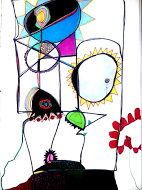
MA: Agreed. What other themes do you find popping up often as you write? I know you have a YA book with a Vietnam vet who plays an important role….
SLS: I often write about males who have issues with their fathers. It’s no mystery where that comes from. I’ve written about my own father in various essays, warts and all. There were plenty of years where our relationship was tumultuous at best, but we got through it, and I’ve never been closer with him than I am now. With that said, tough and sometimes unreasonable—or downright eccentric—fathers often factor in to my work. And by the way, since you mentioned it, my dad is a Vietnam vet.
As far as other themes, I’ve noticed that bodies of water, usually rivers, often show up—even acting as tertiary characters in some ways—though I can’t exactly tell you why that is. Trains and railroad tracks, too. I’ve always found railroads to hold a gritty, grungy mystique which instantly helps create mood and/or setting. In fact, now that I think about it, that story you mentioned in your last question has a meth addict, an estranged father, a river, and a train. See what I mean!
I’ve never really thought too much about theme or symbolism or the like. I just write what I write, but it’s clear that some ideas and topics pop-up in my work more so than others.
MA: Thanks for answering that. I know it’s a tough question, and perhaps one better left to those who read our work with a critical eye. (Or perhaps the Bluetooth eye.) For what it’s worth, I think you did a great job of answering it.
You share almost the same name with a well-known essayist and short story writer. That must be mildly annoying at times. Does this ever cause problems for you? Has it ever helped you? Is there something definitive you would like to say about it for your readers?
SLS: Ha, that’s pretty funny. It might be mildly annoying for Scott Russell Sanders if someone ever compared my work to his, but the opposite has certainly never been a problem! I say this because I think he’s topnotch, and I highly respect him. To have my work confused with his would be an honor. Seriously. I mean, he’s one of the original masters of the creative nonfiction genre as far as I’m concerned. And talk about some amazing writing which deals with addiction and fathers? He’s got an essay that I often teach called “Under the Influence” which is a must-read for anyone who’s ever lived with a family member struggling with addiction. Damn near perfect if you ask me.
But yes, I did decide early on to publish under my full name in order to draw a distinction between the two of us. To answer your question, it’s never caused a problem for me, nor has it helped. However, I did receive a handwritten rejection once from an editor at a highly prestigious journal, commenting on how my work was always stellar, etc. It was flattering, but the story I sent wasn’t all that good to begin with. In retrospect, I feel pretty certain that that editor probably got confused and thought he was responding to Scott Russell Sanders and not Scott Loring Sanders.
And here’s a somewhat humorous anecdote. Last year, an essay I published received a Notable mention from Best American Essays 2015. As did an essay written by Scott Russell Sanders. So, thanks to the power of the alphabet and the fact that the letter L comes before the letter R, my name appears directly above his at the back of the book. When that anthology hit the shelves, I pointed this out to my wife, stating, “Look who just one-upped Scott Russell Sanders.” It will probably be the only time, so I’ll take it.
MA: I’m a big fan of Scott Russell Sanders’ work, too. I love that story about BAE. And on the plus side, you can tell that critical other voice of yours to stuff it, because there’s no chance you were mistaken for him if you BOTH got noted.
And finally, because we are a themed journal, what does “recovery” mean to you?
SLS: You know, that’s a tough one because I’m not sure. I do know that I’m much happier sober than when I was drinking. You could’ve never convinced me that that was possible when I first quit, but every aspect of my life has gotten better. My marriage, being a father, my health, my work—both writing and teaching. I’d never written a word (not a serious word anyway) until after I got sober. That’s been fifteen years now, which sounds crazy to me, even today. Fifteen years without a drink was truly unfathomable when I first quit. Hell, a week was unfathomable. To be perfectly honest, the idea of not drinking again scared the shit out of me. But I’m so glad I did it.
I have a saying which I share with people who come to me asking for advice about getting sober. It goes like this: “Not once in all my years of sobriety have I woken up and said, ‘Man, I wish I had a hangover today.’ Not once.” It seems to always hit home on a fundamental level. So, yeah, I’m proud of being sober. I’m proud of my recovery. I was able to drink a lot back in the day. A whole lot. And somehow I equated that with being tough. With being a man. But you know what I learned through getting sober? Anybody can take another drink, or puff, or hit, or snort. That’s easy. There’s nothing to it. You know what’s hard? Not taking one. That’s real toughness. So, yeah, I’m proud of it. And if those words offer some encouragement to somebody out there who’s having a difficult time, then better yet. I had some great support from friends and family, and I’ve also helped a few people along the way. Maybe this interview will help a few more. So maybe that’s what recovery means to me. Helping. Helping myself, helping others. I guess I’ll leave it at that.
Thanks so much for the great questions. I think there’s a new essay buried in here somewhere.
MA: Gosh, I’ve enjoyed this interview so much. I wish we could continue it over a…cup of coffee. Thank you, Scott. (Also–yet another aside–I named my son Scott, almost twenty years ago. Good name, that.)
 I’m thrilled to announce that Fay Henexson has graciously allowed us to use her beautiful photography to illustrate our July issue. Fay is a native Californian, a librarian by profession and a photographerby avocation. She developed a passion for photography during her career as a law librarian with the California Attorney General’s Office, and since her retirement has relished the opportunity to expand and deepen that passion.
I’m thrilled to announce that Fay Henexson has graciously allowed us to use her beautiful photography to illustrate our July issue. Fay is a native Californian, a librarian by profession and a photographerby avocation. She developed a passion for photography during her career as a law librarian with the California Attorney General’s Office, and since her retirement has relished the opportunity to expand and deepen that passion.


